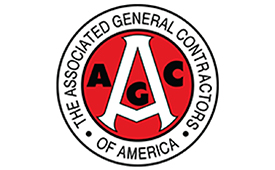AGC: Nonresidential construction spending down

Total construction spending fell 1.1 percent in June as spending on new housing and nonresidential projects declined from May, according to an Associated General Contractors of America (AGC) analysis of federal spending data.
AGC officials say construction spending figures are being impacted as materials and labor shortages are slowing schedules and increasing the cost of construction.
“Strong demand for construction is being offset by rising materials prices and labor shortages,” says Stephen Sandherr, AGC’s CEO. “As firms stretch schedules and boost costs to cover rising materials prices, it is getting harder for public and private owners to proceed with some planned projects.”
Construction spending not adjusted for inflation totaled $1.76 trillion at a seasonally adjusted annual rate in June, AGC says. That figure was 1.1 percent below the upwardly revised May rate and 8.3 percent higher than in June 2021.
Private nonresidential construction spending declined for the fourth straight month, slipping 0.5 percent from May. June’s rate was still 1.7 percent higher than in June 2021.
Public construction spending decreased for the second straight month, falling 0.5 percent in June. But it was up 0.4 percent from the year-ago rate. Residential spending fell 1.6 percent for the month, but it was up 15.4 percent compared to last June.
The downturn in nonresidential construction spending was widespread in June. The largest segment – power, comprising electric, oil and gas projects – slipped 1.7 percent in June. Spending on commercial construction – warehouse, retail and farm projects – declined 0.5 percent, and educational construction spending decreased 0.5 percent.
Among the five largest segments, only manufacturing construction did not fall. It was unchanged from May, though.
AGC officials urge public leaders to boost investments in training programs that expose new and transitioning workers to high-paying construction career opportunities. They also urge officials at all levels of government to work together to address port backups, shipping shortages and manufacturing challenges taxing every point of the construction material supply chain.
“Attracting more people into construction careers and fixing the broken supply chain for key materials will help kick-start a number of stalled construction projects,” Sandherr says. “In other words, addressing labor and materials shortages is the best way to boost construction spending.”









